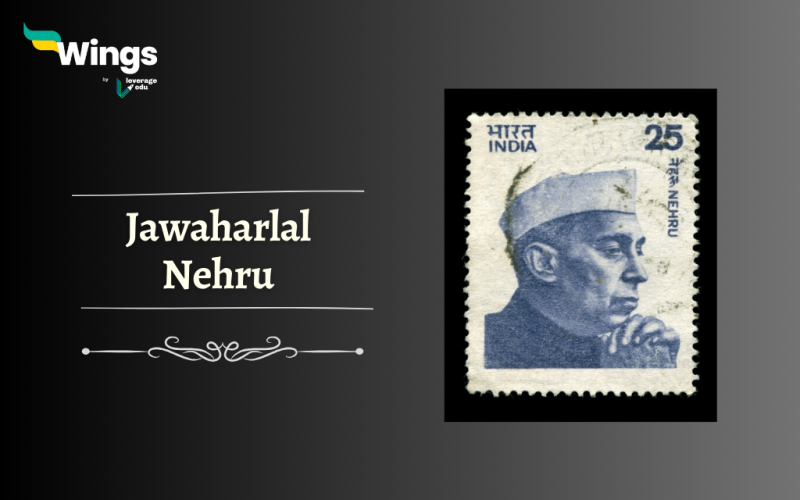Almost 6 decades have passed since the demise of Jawaharlal Nehru but he continues to impact present-day India. The secular ideals of the author of Discovery of India loom large over the hate-filled India of today. Furthermore, the liberal politics and social ideology of the first Prime Minister of India become more relevant in contemporary India, as the country is still gripped by a bigoted mindset and grave inequality. In addition, the vision of the orator of ‘Tryst with Destiny’ is the need of the hour, but, many are still to realise this truth. This Independence Day speech highlighted the dreams of a modern India and declared the onset of a sovereign nation.

Early Life
- Nehru was born in a Kashmiri Brahmin family.
- Nehru’s father Motilal Nehru was among the renowned lawyers of India during that time.
- Being the eldest son of the family, Jawaharlal Nehru completed his early education at the age of 14 under the guidance of private tutors.
- He went to England at the age of 15 and attended the Harrow school.
- Later on, Nehru also attended numerous prestigious institutions such as Trinity College and Cambridge where he earned an honors degree.
- He came back to India somewhere around 1912.
- It was in the year 1916 that he married Kamala Kaul and settled in Delhi.
Also Read: Bengal Partition
Role of Jawaharlal Nehru in Modern India
As mentioned in his historic speech, Nehru constantly tried to cater to the needs of the infant nation. Even though he faced a lot of challenges in dealing with partition, economic gloom, and lawlessness in the initial years, he transformed India with the support of eminent leaders like Dr BR Ambedkar, Maulana Abul Kalam Azad, Sardar Patel, etc.
Under the guidance of the Constitution of India and recommendations of the first cabinet of the Indian government, Nehru steered the country towards economic development and modernisation. In addition, he advocated for secularism, freedom of expression, the abolition of untouchability, and the right against exploitation. With all these ideals, he made the following decisions to be nicknamed the Architect of Modern and Secular India.

Establishing India as a Welfare State
Jawaharlal Nehru passionately advocated for a welfare state, which combined aspects of both capitalist and socialist governance. After extensive international travel and observation of various government models, Nehru recognized capitalist exploitation during the colonial era’s peak.
Through careful analysis of capitalist and communist systems, he introduced the concept of a ‘welfare state’ for India. In this model, the government offers essential economic security to citizens, safeguarding them from market-related uncertainties like unemployment, illness, and challenges linked to ageing.
Also Read: Subhash Chandra Bose: Ideology & Life
Moulding Foreign Policy of India
Nehru dedicated tireless efforts to shape India’s foreign policy and concurrently held the Ministry of External Affairs during his time as Prime Minister. His task was challenging, given the global aftermath of World War II and shifting power dynamics in the United Nations, as he sought to establish amicable relations with other countries.
Guided by Jawaharlal Nehru, India pioneered the Non-Aligned Movement, becoming the first nation to adopt this policy. The Asian Relations Conference in 1947, hosted in Delhi, marked the proclamation of India’s foreign policy and united 29 countries in solidarity. Nehru’s foreign policy legacy continues to benefit India by maintaining a balanced approach to international relations.
Nehru’s Panchsheel Agreement laid the groundwork for India-China relations, emphasizing peaceful coexistence and mutual cooperation. Premier Zhou Enlai and Prime Minister Nehru signed the Panchsheel Agreement on December 11, 1957, setting the tone for friendly interactions between the two nations.

Setting Up Institutions of Excellence
Furthermore, Jawaharlal Nehru laid the scientific groundwork for India’s space leadership and engineering prowess, establishing institutions like ISRO, IITs, and universities. He initiated the dual-track nuclear program, leading to India’s nuclear capabilities. His efforts also contributed to industrial and manufacturing sector growth, setting India on the path to development and sovereignty.
Also Read – Indira Gandhi: Know All About the First Woman Prime Minister of India
Conceptualising the Five-Year Plan
Nehru’s perceptive understanding of the nation’s needs led to the inception of the Five-Year Plan concept, aimed at resource optimization and balance. The First Five-Year Plan was launched in 1951 amidst challenges like Partition aftermath, refugee inflow, food scarcity, and high inflation. It prioritised agriculture, irrigation, and primary sector advancement. Despite an initial GDP growth target of 2.1%, Nehru’s leadership resulted in a 3.6% growth in that year. India continues to reap the benefits of this visionary approach.
Quiz
Results
#1. When did Nehru sign the Panchsheel Agreement?
#2. How many countries attended the Asian Relations Conference of 1947?
#3. When was Five Year Plan launched?
Pandit Jawaharlal Nehru was the first prime minister of India after it gained independence from the brutal and unjust rule of the Britishers. Additionally, he was also a well-known politician who came from the Indian National Congress party. Jawaharlal Nehru, along with other freedom fighters, went to great lengths to liberate India from the shackles of oppression and colonial rule.
Jawaharlal Nehru was a Hindu as he himself stated during his presidential address to the Lahore Congress in 1929.
After Jawaharlal Nehru, Lal Bahadur Shastri became the prime minister of India. However, his succession was short lived as he died in Tashkent after 1 year 7 months.
Relevant Blogs
| Widow Remarriage Act | Ishwar Chandra Vidyasagar |
| Bhagat Singh | Swaraj Party |
| Peasant Movements | Kiran Bedi |
| Morley-Minto Reforms | Arya Samaj |
| Bengal Partition | Birsa Munda |
That’s all about Jawaharlal Nehru. If you want to read more articles like this, you can get Study notes on the Modern History of India here. Also, you can visit our general knowledge page on Indian History!
 One app for all your study abroad needs
One app for all your study abroad needs
















